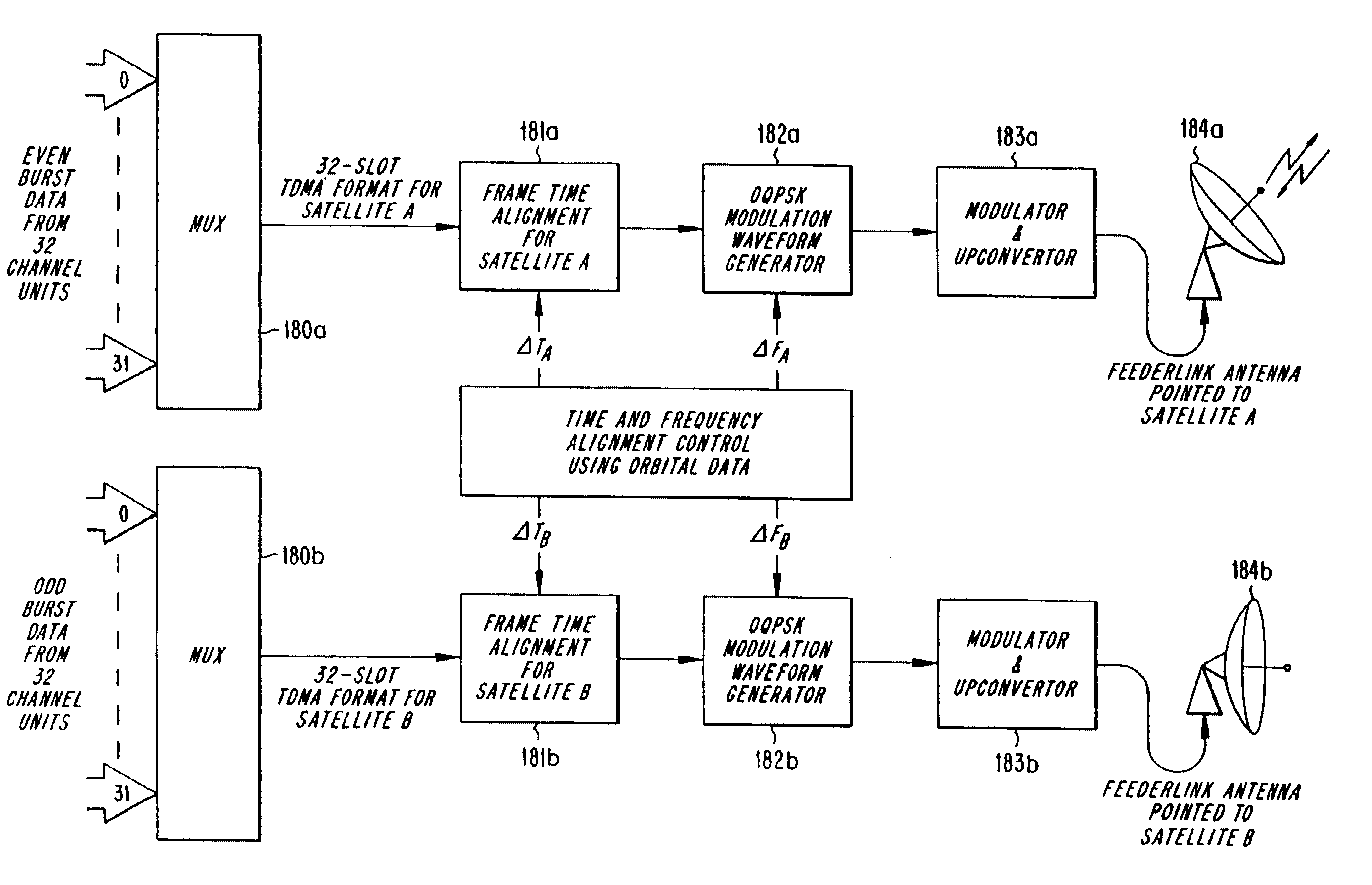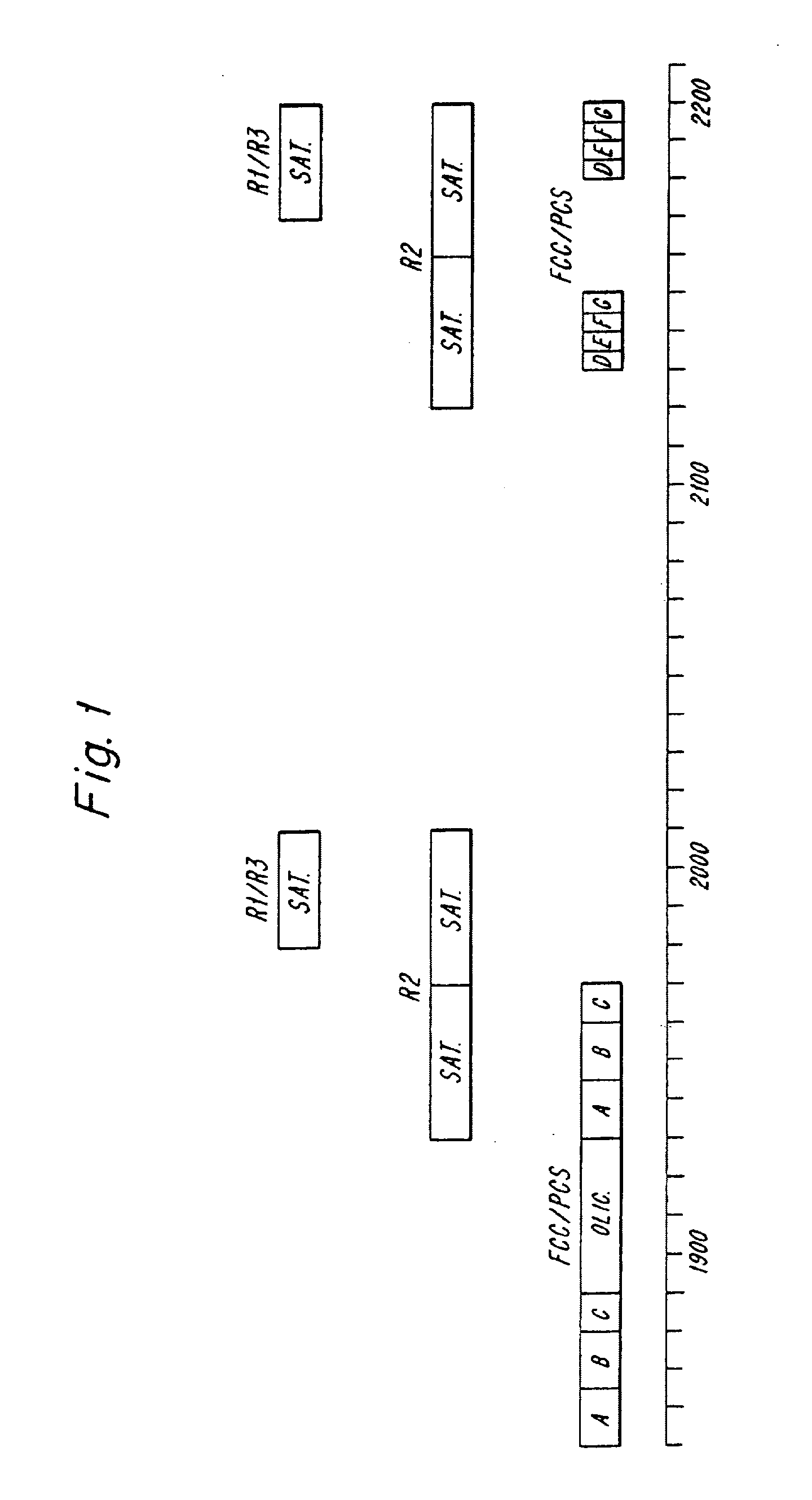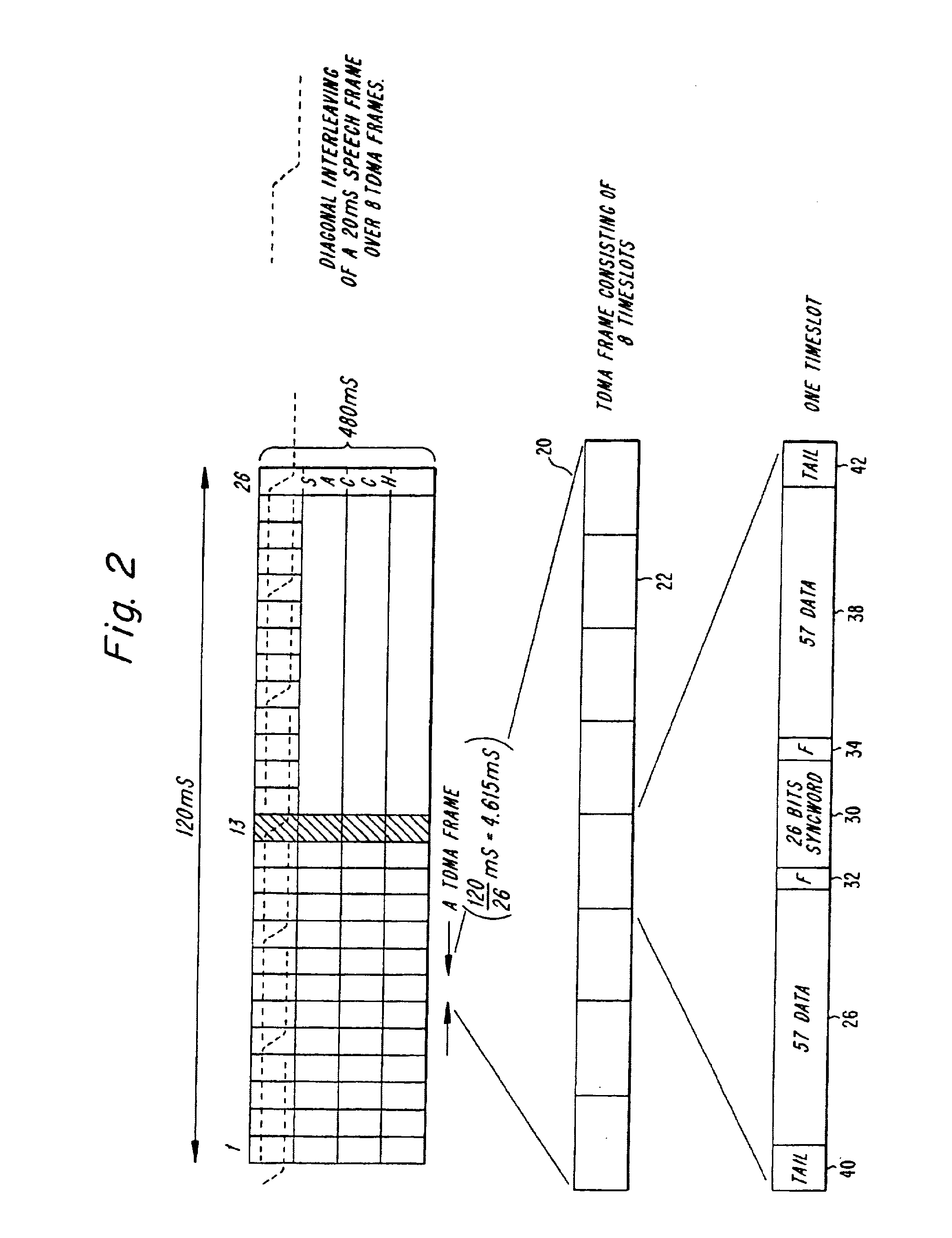Dual mode satellite/cellular terminal
- Summary
- Abstract
- Description
- Claims
- Application Information
AI Technical Summary
Benefits of technology
Problems solved by technology
Method used
Image
Examples
Embodiment Construction
[0029]FIG. 1 illustrates the allocations of frequencies for Personal Satellite Communications services in world regions R1, R2 and R3 compared to FCC proposals for new frequencies to be offered by auction for new landbased Personal Communications Services. It can be seen that the PCS bands marked DEFG conflict with the satellite PSC bands. However, the FCC has at the present time abandoned plans to allocate frequency bands DEFG to PCS, and the planned frequency auction is restricted to bands marked A, B and C. The separate A, B and C groups represent up- and downlink bands for directions from mobile to base and from base to mobile, respectively, and the 80 MHz separation is known as the duplex spacing.
[0030]In between the up- and downlink bands, the frequencies will be offered on an unlicensed and largely unregulated basis. The unregulated band has no envisaged frequency duplex spacing and is only suitable for simplex, half-duplex or press-to-talk systems, or systems which use same-...
PUM
 Login to view more
Login to view more Abstract
Description
Claims
Application Information
 Login to view more
Login to view more - R&D Engineer
- R&D Manager
- IP Professional
- Industry Leading Data Capabilities
- Powerful AI technology
- Patent DNA Extraction
Browse by: Latest US Patents, China's latest patents, Technical Efficacy Thesaurus, Application Domain, Technology Topic.
© 2024 PatSnap. All rights reserved.Legal|Privacy policy|Modern Slavery Act Transparency Statement|Sitemap



